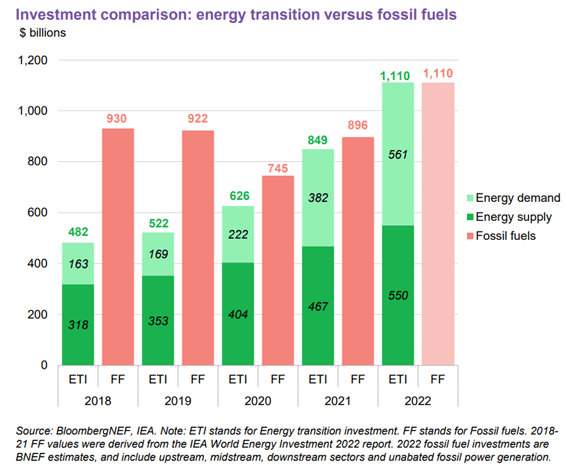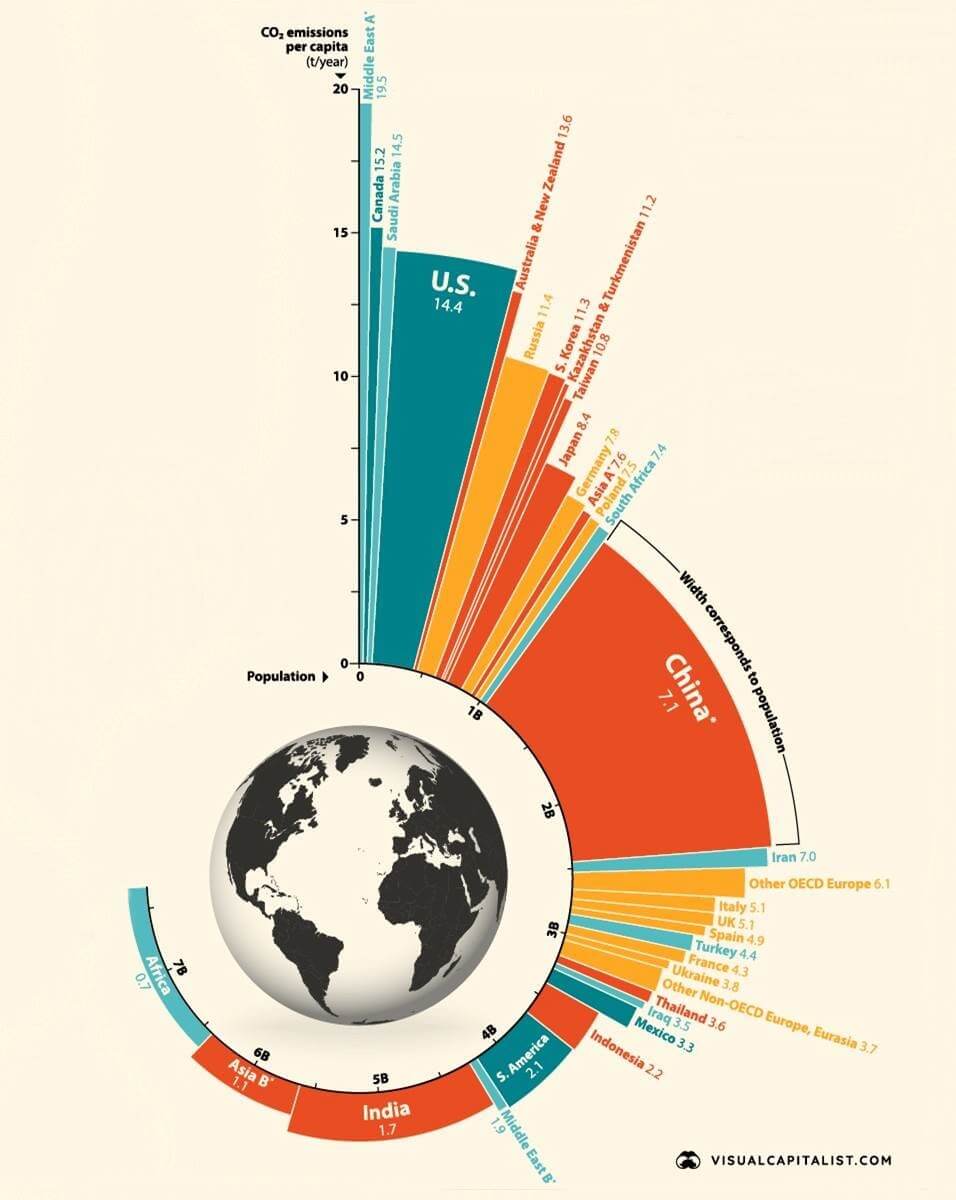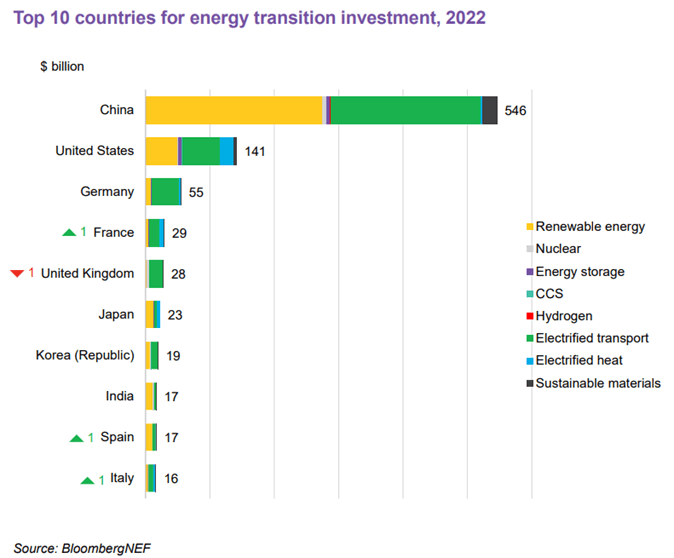The world is currently on a precipice when it comes to climate change, I sound like a broken-down record player at this stage, but it’s frustrating the talking that’s happening and the lack of action. Behind us, there are the countless mistakes of the past that has brought us to our current climate crisis today. Ahead, there is the opportunity to make definitive positive change, but also the possibility that things will simply continue the way they are and we’ll all be the worse for it. Big decisions need to be made, and this world cannot afford to procrastinate much longer.
To put all of this in context, because the figures are bewildering in this article, last year defence spending by the US = $858Bn, China = $230Bn, the UK = $86Bn. Read the rest of this article and come back to this line above again. It gives some indication why its our governments that have got this climate crisis all wrong.
The climate change fight is an expensive one, there’s no denying that, but real change requires real funding, real energy, and real commitment put into it for movement to be made. The oil and gas industry over many decades have fuelled our current situation. We, the consumers, have been using their products for convenience, we are the ones who need to look at the impact that taking carbon out of the earth and burning it in vast amounts has had on rising temperatures.
Globally, the energy transition saw a total investment of $1.1 trillion in 2022, a 31% increase from 2021, this is fantastic. Renewable energy remained the sector receiving the largest sum, $495Bn, but investments into electric transport has risen a considerable 54% since last year to a figure of $466Bn. For the first time in history, 2022 saw the same amount of investment as on fossil fuels. Yes, that’s right, we have still invested over $1 trillion this year on extracting fossil fuels, more than we have any year over the past five years.

While this may seem like a lot of money – and it certainly is, there’s no arguing that – the truth is that the amount needed to achieve net-zero targets is much higher. It is estimated that $9.2 trillion per year would need to be invested if we are to reach net-zero by the United Nations’ proposed date of 2050. That’s just over an 8-times increase than what we’re spending currently, we haven’t got long left.
Currently, China is in the lead in terms of money invested in energy transition, with $546Bn being invested in 2022. A large portion of this investment has gone into renewable energy and electric transportation, two sectors that China is seeing rapid growth in. In June last year, China announced that they aim to source 33% of grid-power from renewables, a reasonable goal considering in 2020 28.8% of the grid’s energy came from renewables.
To some, the fact that China is footing the majority of the energy transition bill only makes sense. After all, the country is responsible for the most emissions, with 11.47Bn tonnes of CO2 being released in 2021 alone. They’re, of course, the factory of the world, and they have the largest population. However, their CO2 emissions per head are far less than many others.

The highest emitters are many countries in the Middle East, Canada and the United States, the US have invested the second-most into energy transition. The US emissions per capita is 14.4 tonnes. This is over double China’s 7.1 tonnes.
The US invested $141Bn into the energy transition in 2022, with the majority of this going into funding for renewable energy and electrified transport. This is an 11% increase from their investments in 2021.
Over the next decade, the US will spend $514Bn on tackling climate change. A large portion of this figure will come from the CHIPS and Science Act, which was established by President Biden in 2022. The act will dedicate $280Bn to the development of scientific R&D projects including semiconductor manufacturing, new battery development, and the production of more efficient solar panels. Due in part to initiatives like these, government spending on renewables for the next five years is predicted to be 15x more than spending in the 90s and early 00s. It sounds like a lot, but the US petrol company Exxon made $55.7Bn in profits this year alone, more than a 10th of the entire spend going into climate change for the next decade.
Another big entity in the energy transition is the EU. If the EU were considered a country, they would actually rank second place in spending, with a combined of $180Bn invested in the energy transition in 2022, overtaking the US. But, its 56% of US spending of the US.
On an individual country level, third was Germany at $55Bn, with France at $29Bn and the UK at $28Bn. Oil giants Shell and BP, however, saw a combined profit of $68Bn this year. The UK’s 2022 spend has actually seen a 20% decrease, partially due to a drop in offshore wind farm developments, a reminder that the country is falling dangerously behind when it comes to climate commitments.
Another of the big players is India, which is the third most CO2 producing country in the world, emitting 2.71Bn tonnes of carbon in 2021. Despite this, it is currently only the eighth biggest spender when it comes to the energy transition, with $17Bn made in investments in 2022. When we look at the population of India, they are nearly halfway down the list of per capita emissions, at 1.7 tonnes. However, with an ever-growing population, they are a country that is set to see massive increases in power consumption in the years to come, therefore the $17Bn being spent – just over $10 per head – is incredibly insufficient, especially as they along with China didn’t sign up to the COP26 commitments to phase out coal production.
On the whole, India has been slow to incorporate the relevant climate spending and policies. As it stands, the country has set a goal of achieving net-zero by 2070, twenty years after the United Nations’ recommended goal year of 2050. Coal minister Pralhad Joshi also announced that coal use would likely continue until at least 2040. When the world’s third largest emitter has stated outright that it will continue to use fossil fuels for decades to come, not a good omen to keep global temperatures from rising past 1.5 degrees.

Ultimately, it all comes down to this: nobody is moving fast enough to actually implement the changes that are desperately needed. What the world is currently investing into the energy transition is going to have to significantly increase if we are to have any hope of achieving the net-zero targets we have set for ourselves. We are no longer in a position where we can pretend that how we are acting is sufficient and sustainable in the face of climate change.
It is time for the world’s governments to reach even deeper into their pockets, get their priorities right and deal with their common enemy – climate change. Until they provide the funding for the innovation and technological advancements that will get us out of this mess we have created, how can this not be their core focus.
The drug of fossil fuels needs to be broken. Us, the public, need to go ‘cold turkey’, and we need to realise that this oil and gas dependency must be broken, now.

Share your thoughts
No Comments
Sorry, the comment form is closed at this time.